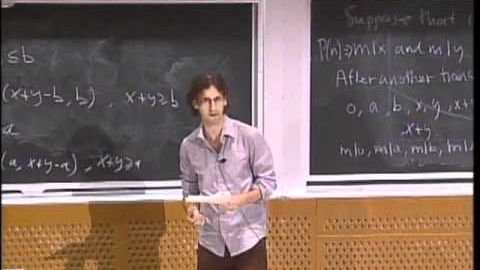
Subtitles & vocabulary
Lec 4 | MIT 6.042J Mathematics for Computer Science, Fall 2010
00
Dou Lin posted on 2016/07/18Save
Video vocabulary
assume
US /əˈsum/
・
UK /ə'sju:m/
- Transitive Verb
- To act in a false manner to mislead others
- To believe, based on the evidence; suppose
A2TOEIC
More common
US /ˈkɑmən/
・
UK /'kɒmən/
- Noun (Countable/Uncountable)
- Area in a city or town that is open to everyone
- Field near a village owned by the local community
- Adjective
- Shared; Belonging to or used by everyone
- Typical, normal; not unusual
A1
More state
US /stet/
・
UK /steɪt/
- Noun (Countable/Uncountable)
- Region within a country, with its own government
- Situation or condition something is in
- Adjective
- Concerning region within a country
A1TOEIC
More positive
US /ˈpɑzɪtɪv/
・
UK /ˈpɒzətɪv/
- Adjective
- Showing agreement or support for something
- Being sure about something; knowing the truth
- Noun
- A photograph in which light areas are light and dark areas are dark
A2
More Use Energy
Unlock All Vocabulary
Unlock pronunciation, explanations, and filters
